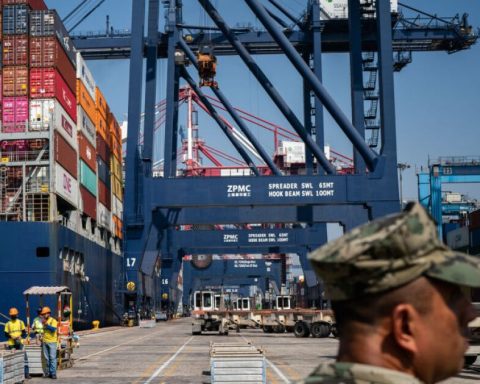Jared Laureles and Jessica Xantomila
La Jornada Newspaper
Monday, December 30, 2024, p. 6
The violence that plagues Sinaloa has also disrupted the lives of agricultural laborers, not only those who live in the entity, but also those who arrive from Guerrero and Oaxaca. They have been forced to travel in caravans, modify their road routes and remain in the precarious quarters of the fields without leaving beyond the furrows.
Between October and November, at least three caravans left the Montaña de Guerrero towards Culiacán, the first made up of five buses against whom they wanted to attack
organized crime groups, denounced Paulino Rodríguez, in charge of accompanying migrant agricultural laborers at the Tlachinollan Human Rights Center and who supervises these caravans.
He adds that that is why the others had to modify their departure times to arrive during the day and thus reduce the risks, because the employers do not have guarantees for the safety of those who are dedicated to planting eggplant, tomato, zucchini and chili.
Mid-year grind
Sinaloa is one of the main recipient entities of day laborers, since it is estimated that in each harvest season more than 421 thousand are employed under precarious salary and working conditions, according to official data.
Most travel with their family, carrying household goods, sleeping bags and grills for cooking; They move from field to field, they are hired seasonally in one area and then they go to another; It is estimated that they will return to their communities in May.
They bring their children, who in addition to seeing their education cut short, run the risk of dying from a respiratory disease and even malnutrition, as happened in the first months of 2023, when seven infants died from any of these causes.
People, mainly indigenous people from communities such as Tres Caminos, Chiepetepec and Ayotzinapa, are transferred to this key state to work in two ways. One, the contracting company sends trucks to the southern entities so that the butlers
recruit those who will work for the next six months cutting vegetables, explains Celso Ortiz, an academic at the Autonomous Indigenous University of Mexico, in Los Mochis.
There are also others who leave on their own. In the case of Guerrero, they board buses at the Internal Services Unit or the Casa del Jornalero, in Tlapa, where the transport company takes them. they throw in lots to sell more tickets
. There are 45 people in each one, including children in the arms of mom or dad
who must endure a 34-hour journey to reach Culiacán, Rodríguez seconds.
Rubén, fictitious name to protect his identity, is one of the laborers who last November went to one of the agricultural fields in Culiacán, where he works 12 hours a day cutting Chinese vegetables, which include a variety of 30 vegetables such as chives. , Shanghai and achoy leaf, which are exported to the Asian country and the United States.
He comments that as a result of the violence, what has affected him the most is not leaving the agricultural field to the city to buy food for his family or even receive medical attention in case of emergency because they are prohibited from doing so after 7 p.m. for security.
This is one of the measures, if anything the only one, applied by the company for which they work, so they must remain locked in the quarters that they rent during the harvest and where they generally live overcrowded, with a lack of hygiene and drinking water.
We live in a room and we have a schedule to close the door. Before, entry and exit were free but not anymore, so that nothing happens to people.
Rubén points out that he will spend five months between the rows, in which he practically works all day and afternoon with a payment of between 12 and 18 pesos per filled box of vegetables, although he says he manages to make between 15 and 25 a day.
Due to this situation, Celso Ortiz affirms that to help agricultural laborers, many supportive people have collected food to bring them some groceries, since those who work in the fields are made invisible.
He adds that although the majority of agricultural laborers have not yet arrived, he estimates that many will stop going to the fields of Sinaloa and will opt for other states. This situation, he says, could cause a lack of labor, and although the economic impact has not yet been calculated, because the cutting season has just begun, it is a worrying situation.















